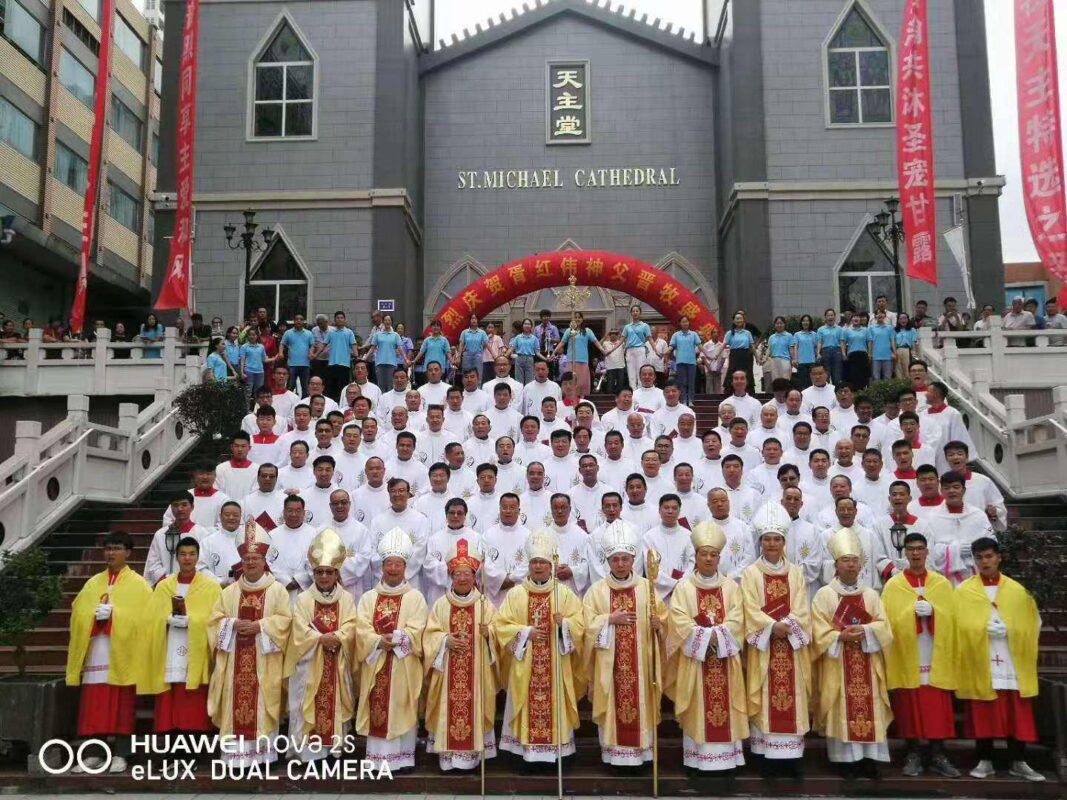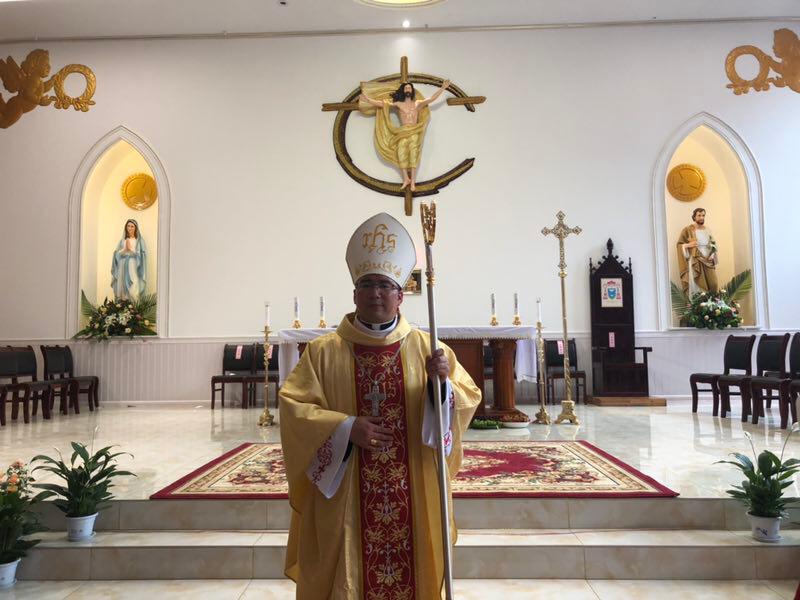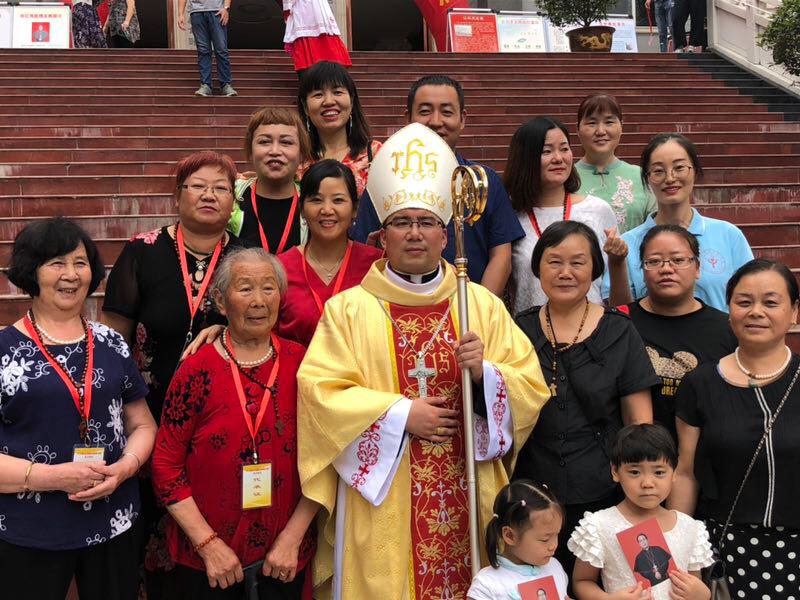CHINA – VATICAN
It is the second episcopal ordination since the Sino-Vatican agreement. The ceremony was presided over by Msgr. Ma Yinglin, bishop of Kunming (Yunnan) and president of the Council of Chinese bishops, one of the seven bishops from whom Pope Francis lifted excommunication. Doubts on pontifical “nomination” or “approval”. The Holy See Press Office issues a declaration.
Updated: February 26, 2021 03:19 AM GMT



Hanzhong (AsiaNews) – Msgr. Stefano Xu Hongwei, 44, was ordained coadjutor bishop of the diocese of Hanzhong (Shaanxi) today. This is the second episcopal ordination since the signing of the Sino-Vatican agreement on the appointment of bishops, last September 22nd. On Aug. 26, in Jining (Inner Mongolia) there was another ordination, that of Msgr. Antonio Yao Shun.
The solemn ceremony in the Cathedral of St. Michael in Hanzhong was presided over by Msgr. Ma Yinglin, bishop of Kunming (Yunnan) and president of the Council of Chinese bishops. Msgr. Ma is one of the seven bishops from whom Pope Francis lifted excommunication on the same day as the agreement was signed.
In addition to Msgr. Ma there were seven other bishops, all from the Shaanxi region: Msgr. Wu Qinjing of Zhouzhi; Msgr. Weinan’s Tong Changping; Msgr. Yang Xiaoting of Yulin; Msgr. Dang Mingyan of Xian; Msgr. Yu Runshen, of Hanzhong; Msgr. Han Yingjin of Sanyuan; Msgr Wang Xiaoxun of Ankang; 80 priests concelebrated with them. There were dozens of women religious among the faithful, a crowd of a thousand people.
During the ceremony the Council of Chinese Bishops’ document naming the new bishop was issued. At a certain point the official text states that “the Pope approved the candidate”. In the past, official bishops were appointed only by the Council of Bishops. For several priests this is the sign that “the agreement is working”. Other priests, however, point out that in this way the Pope has only the function of “approving” and not “naming” the bishop, thus manifesting his compliance with the Chinese method of appointing bishops.
In addition, the appointment of Msgr. Xu according to the “Chinese method” – as well as that of Msgr. Yao Shun – took place in a deeply “secular” style: in a hotel, under the vigilant control of the civil authorities, very similar to a political election. This lack of clarity is increased by considerations made by personalities close to the Vatican which state that Msgr. Xu was chosen by the Holy See long before his official appointment.
In any case, today, the director of the Vatican Press Office has issued a communication stating that Msgr. Stefano Xu Hongwei “received the Papal Mandate and his ordination also took place in the framework of the Provisional Agreement between the Holy See and the People’s Republic of China signed in Beijing on 22nd September 2018”.
Bishop Xu and his diocese
Msgr. Stefano Xu Hongwei was born on 16 January 1975. In September 1993 he entered the minor seminary of the diocese of Weinan; in September 1996 he entered the Xian seminary; in July 2002 he was ordained a priest in the diocese of Hanzhong. In August of the same year he was assigned as parish priest of the Nanzheng District Parish, with the task of helping in the pastoral work of Hanzhong Cathedral.
From July 2004 to June 2008 he studied at the Pontifical Urbanianum University in Rome (Vatican), obtaining a pastoral license; from November 2008 to April 2010 he continued his pastoral studies in the diocese of Vancouver (Canada).
In April 2010 he was appointed pastor of West Street Cathedral, in the Hantai district. In December 2015 he became a member of the Catholic Provincial Committee (“the two sessions”: Patriotic Association and Council of Bishops).
In 2012, and in 2017, he was also a member of the Standing Committee of the Chinese People’s Consultative Political Conference in the district of Ren Hantai. On 11 April 2019 he was chosen as bishop of the diocese of Hanzhong. The motto he chose is: “Servire in Veritate et Caritate”.
The diocese of Hanzhong is an ancient mission of the Pontifical Institute for Foreign Missions (PIME). It has about 30 thousand faithful, served by 30 priests and 11 women religious, for a long time divided between an underground and an official community, with two different bishops. The reconciliation that is still progressing began before the death of John Paul II.


 ENG
ENG